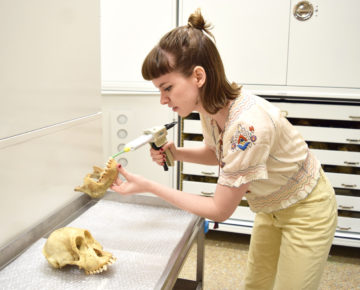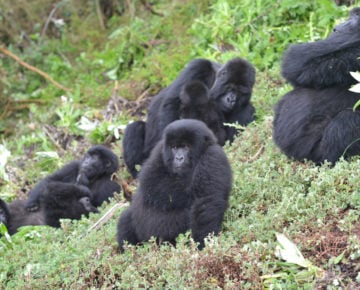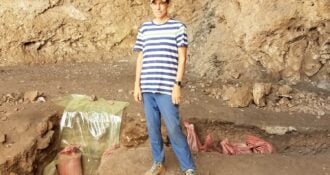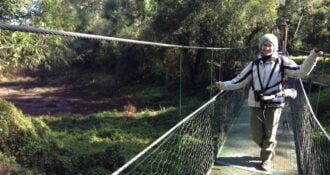Introducing our next spring 2016 grantee Kathryn McGrath. She was awarded a Leakey Foundation Research Grant for her project entitled “Understanding stress-related enamel defects in wild mountain gorillas.”

Kathryn McGrath collecting dental impressions of orangutan teeth at the Smithsonian’s National Museum of Natural History
Teeth provide an enormous amount of information about their owner, including age at death, sex, and dietary adaptation. Teeth are also important to studies of health and development because they provide a permanent and detailed record of their absolute chronological growth. During childhood, stressors such as undernutrition and disease disrupt growth, creating horizontal grooves on the tooth surface. The condition marked by such defects is called linear enamel hypoplasia (LEH).
LEH is ubiquitous among living and fossil apes, including humans. In recent years, an exception to this pattern has been noted in the folivorous mountain gorilla. Two main hypotheses were put forward to explain the low frequency of LEH in this group: 1) a readily-available folivorous diet buffers mountain gorillas from seasonal lows in fruit availability, and 2) details of the underlying microanatomy of mountain gorilla teeth create shallower defects than in other great apes or humans. However, very few skeletal collections allow researchers to test these hypotheses. Only about 900 mountain gorillas exist today in the high altitude forests of central Africa, and not surprisingly, even fewer are available for study in museum collections. My dissertation research aims to assess LEH in the largest collection of mountain gorilla skeletons in the world, recently made available for study by the Mountain Gorilla Skeletal Project in Rwanda.

Virunga mountain gorillas. Photo credit: Jordi Galbany
Preliminary data suggest that LEH frequency has been underestimated in mountain gorillas, although defects are notably shallower, and thus more difficult to identify using traditional methods (e.g., using a hand lens). I will use novel imaging and analytical methods to quantify LEH expression in mountain gorillas and a comparative sample of other great apes to establish quantitative criteria for defect identification. I will next assess the influence of underlying dental microanatomy on defect morphology by studying thin sections of great ape teeth. Finally, I will attempt to determine what behavioral or health factors might underlie LEH in mountain gorillas. This is possible because many mountain gorilla skeletons have associated records collected by behavioral researchers and veterinarians since Dian Fossey established Karisoke Research Center in 1967. Very little is known about what kinds of stress manifest in LEH in wild primates, and this project provides the rare opportunity to test hypothesized causes in the context of a long-term behavioral and climate dataset. Understanding the factors that underlie the variation in LEH among living great apes will greatly improve our ability to confidently interpret the same condition common among early humans in paleoanthropological contexts.

Left: Male mountain gorilla mandible. Middle: Left mandibular canine from the same individual. Right: High-resolution scan of enamel hypoplasia on the tooth surface.
Comments 1






Very cool!